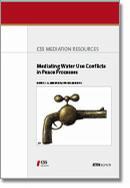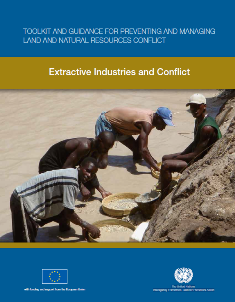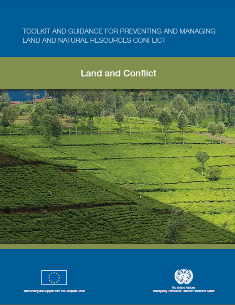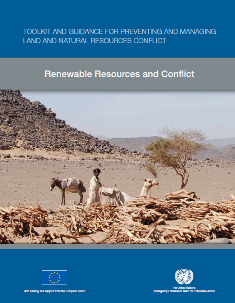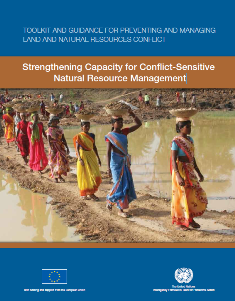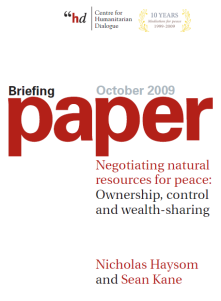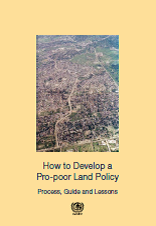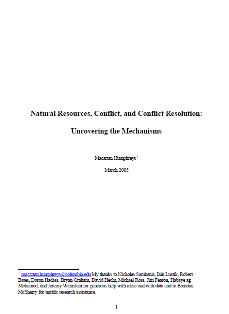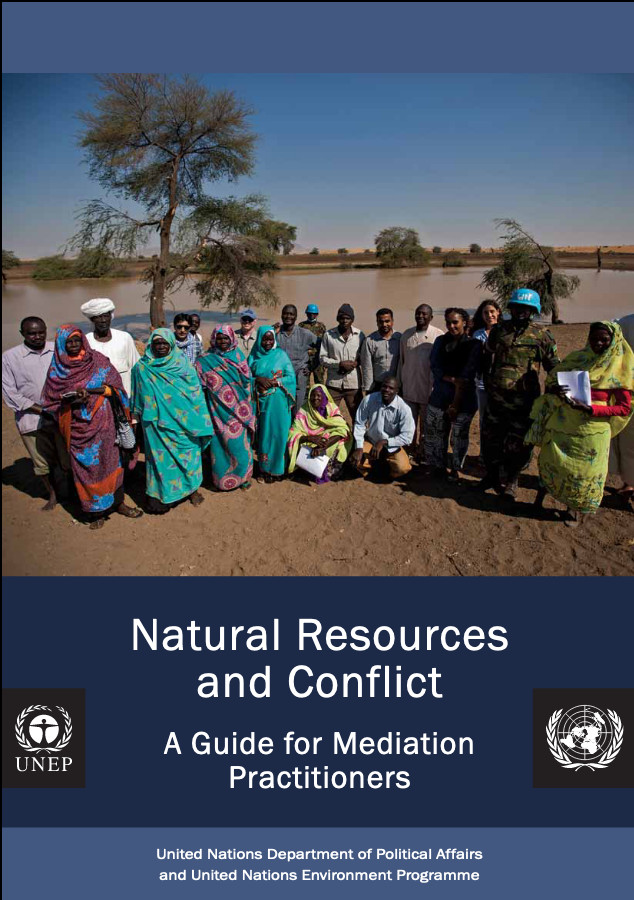
2015 | Author: United Nations Department of Political Affairs and United Nations Development Programme
Natural Resources and Conflict: A Guide for Mediation Practitioners
The guide aims to inform mediators and stakeholders addressing conflicts over natural resources — whether those disagreements are violent, have the potential to turn violent, or are part of a larger political struggle, including within a peace process. It draws on the field experiences of mediators and mediation experts. It also features lessons learned from UNEP’s work on environmental diplomacy in different conflict affected countries, with a particular focus on how to use impartial technical knowledge to equalize stakeholder information in a mediation process. Helping to identify paths towards resolution through mediation and third-party involvement, the Guide can be applied for localized and transboundary conflicts, as well as natural resource disputes that arise in the context of broader peace negotiations.
